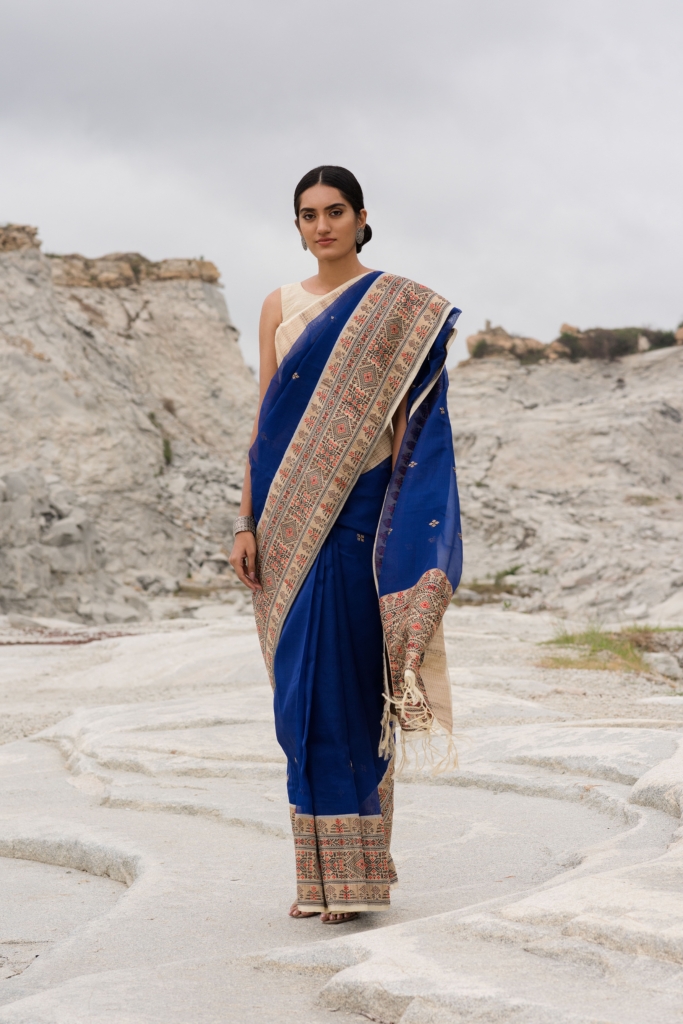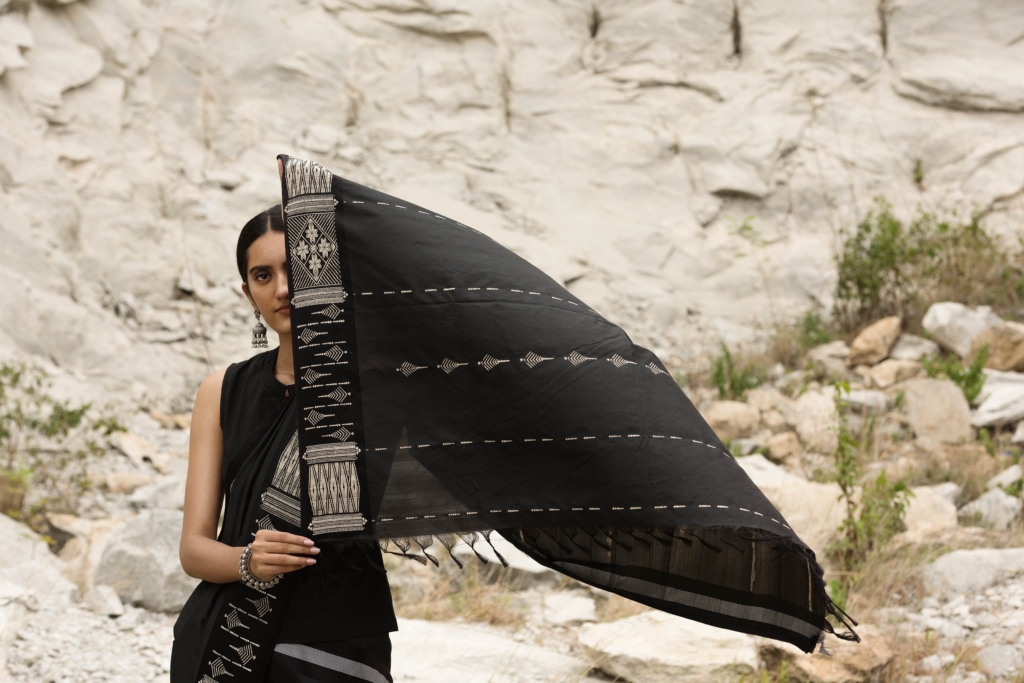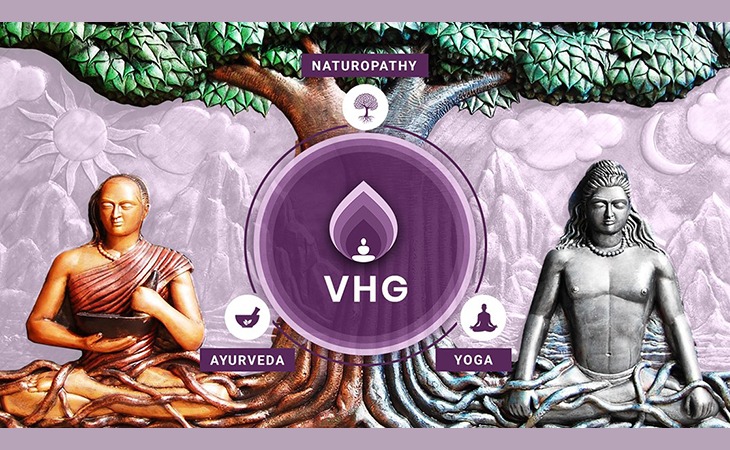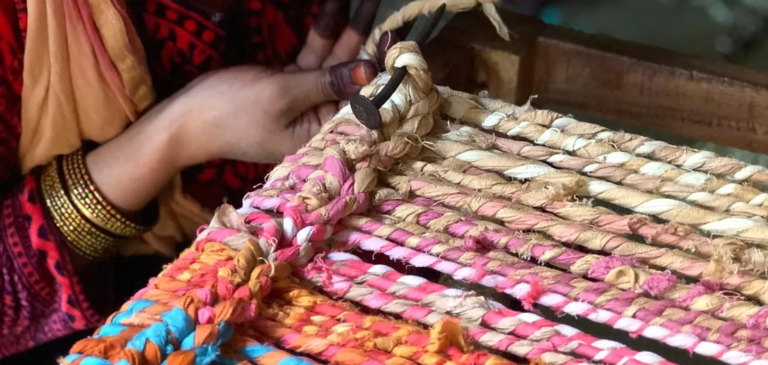Sisters Moumi Moola and Preeti Bhutani come from a family that’s always been immersed in, and had a deep love and respect for textiles and their history. “We wanted to be involved in sustaining it, and keeping it relevant for today,” says Moumi. “That’s what led us to start Taatini”
They launched the business in 2015, selling their modernized, unique, tribal motif-inspired sarees, all of which are made using natural yarns. Moumi and Preeti describe Taatini as a “textile design house” that believes in the values of the slow fashion movement, primarily in sustainability.
Follow our conversation with the two sisters, as they share insights about their journey as first time entrepreneurs.
Starting Taatini
While Moumi has an honor’s degree in psychology, she has always been involved in working with urban poor communities in Bangalore. She has worked with disadvantaged children, and has helped in building programs for them to learn about the history of India, as well as the issues the country faces today. Her degree in psychology has helped her understand consumer behavior, and working with urban poor communities has led her to realize that marginalized groups are rarely given a choice in the type of products they make, which is why Taatini, as a brand, strives to involve artisans and take their input with every collection.
Preeti, on the other hand, has worked in the export industry for a few years. She also received a master’s degree in hand woven textiles, and worked with weavers (mainly in Assam) before starting Taatini.
In Sanskrit, the word “Taatini” refers to rivers, whereas in Assamese, the word refers to a female weaver. When coming up with a name for their brand, the sisters took inspiration from both of these words.
They began their business by selling hand-woven sarees, and ‘Mekhela Chador’, which are traditional Assamese dresses. Gradually, they introduced other products like stoles, and hand-woven yardage, which can be customized to fit interior spaces, and made into garments and accessories. Their products are made using natural yarns including Eri silk, Ahimsa silk, mulberry silk, and cotton blends, traditional handloom techniques, and natural dyes, wherever possible.
What makes Taatini unique?
Working from the very first stage of yarn production, with silk farmers, has ensured that Taatini gets the finest quality of cocoons, and therefore silk. They also work directly with hand spinners, as each product requires a different thickness of yarn, and then with hand weavers.
While the weavers do use traditional weaving techniques to manufacture their sarees, the designs they produce are entirely new. Taatini draws inspiration from tribal aesthetics, and also takes their designs to different artisanal groups in India–including Banaras, Assam and Karnataka–which helps curate their unique designs and brand image.
They began by selling their products exclusively at exhibitions. At their first few exhibitions, which were towards the end of 2017, Moumi and Preeti showcased not only their products and the process of making them, but also introduced the artisans who made them, and the regions they came from. When the pandemic hit, however, they were forced to begin selling their products online and in iconic retail stores (such as Folio), effectively moving away from selling in exhibitions, and starting shipping pan India.
Taatini has their online presence, including their website and social media. One aspect that is significant for them is the documentation of the journey that each product goes through, which is a detailed account that they share with their customers. Another important aspect of their brand is their muslin bags that they package all their products in. These bags are made by an NGO that works with acid burn victims, especially urban poor women, and aids in giving them livelihoods.
Speaking about her customers, Moumi said – “We realized she’s a woman who has knowledge about textiles. They’ve always reached out to us, and have been interested in the story behind the product – the yarns, the blends, the weaves. And we’ve gained a lot of confidence because most of our customers have become repeat customers”


The Taatini Team
When asked about the people they work with, Moumi revealed that they have a relatively small team. While Moumi handles operations, scales and marketing, Preeti takes care of the design and production aspects of their business. The rest of their team handles other facets of the enterprise, including accounts, logistics, digital marketing and quality control.
They have also formed partnerships with artisans. During the pandemic, when artisans were struggling with finding work, Moumi and Preeti launched initiatives to help them out, which effectively gained their trust. An example of this is the Taatini Limelight, which is a section of their business that works to showcase an artisan’s own enterprise. They would take over the logistics and marketing of these enterprises and showcase their products.
They remain open to collaborations and learning in the future, specifically from brands that share their vision and values when it comes to sustainability and selling handmade products.
Building their enterprise for the future
When it comes to scaling their enterprise, Moumi and Preeti feel that their business shows a lot of promise, especially since they began selling custom-made products that can be made out of hand-woven yardage. Due to the overwhelming response that they received upon introducing this product, they feel that it also opens up doors for them to enter international markets.
Challenges they faced and learnings they’ve acquired
As first-time entrepreneurs, Moumi and Preeti faced multiple challenges. One challenge they face with the design process is managing time.
“Each collection has its own set of challenges, especially since we work with natural yarns and natural dyes. So you have to constantly adapt, and work with what you have,” Preeti said. “And all the designs that we do are new to the weaver. So, she has to get used to it.”
They have since learned to give it time, and work with as little sampling as possible to avoid wastage. They have also learned to balance the weaver’s skillset and technical possibilities with their own aesthetic and sustainable requirements of each cluster of artisans.
From a more technical perspective, Moumi has faced challenges in managing cash flow. The fact that credit is not easily available, given the unsegregated and disorganized nature of the handloom industry, has also been an obstacle for them. Another challenge they face is with marketing, as their typical customer is part of a very niche segment of India. Reaching them isn’t an easy task, given their available budget. They are currently overcoming this issue by fine-tuning systems and processes, working on inventory management, and engaging more with the handloom ecosystem.
Both Preeti and Moumi state that their biggest learning, over the course of their journey, has been learning how to change and adapt. “We couldn’t just tick one box and say that we’ve cracked this. We basically always need to be ready to adapt, without compromising on our core values and beliefs.”
Preeti and Moumi feel like the term “cultural enterprises” was something they related to immediately when they came to know about NICEorg. “Every small brand has so many stages of failures and growth, and we feel like having a larger enterprise that can hold their hand through it all is very reassuring. It gives us a sense of confidence too, like there’s someone we can turn to.”




